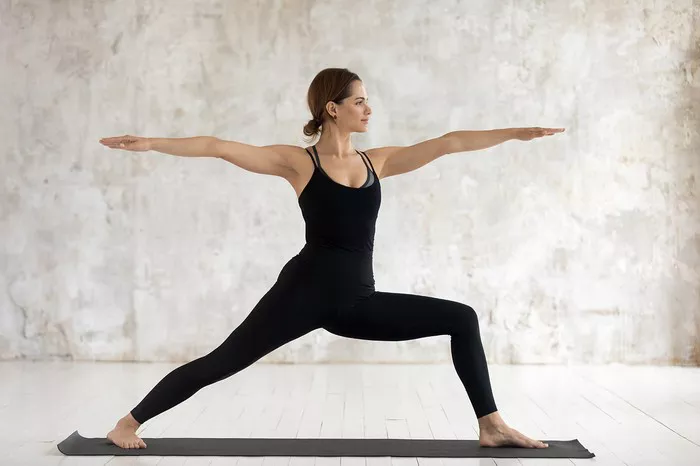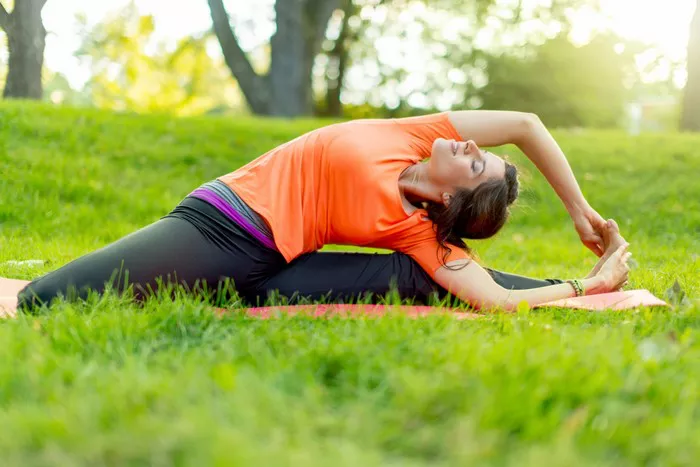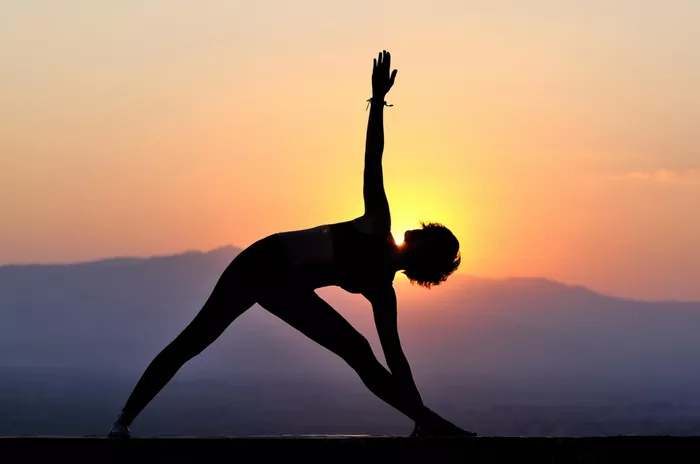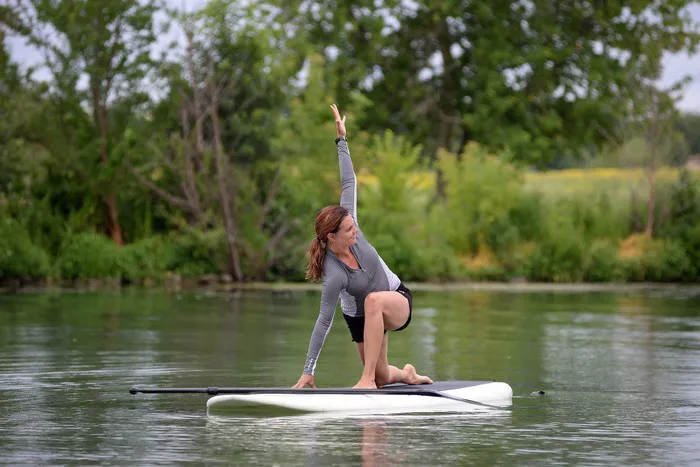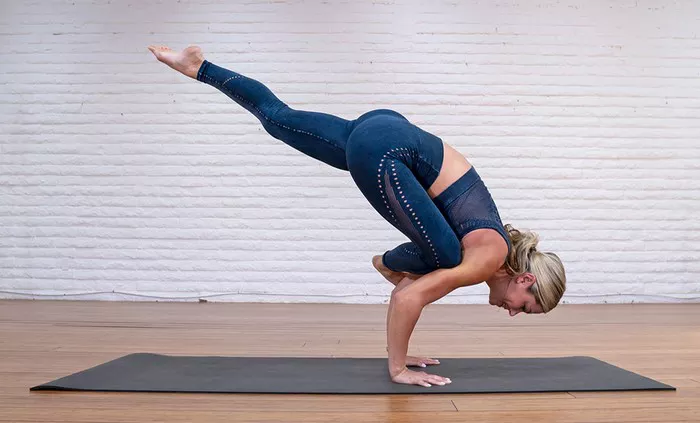Vajrasana, also known as the Diamond Pose or Thunderbolt Pose, is one of the most fundamental seated postures in yoga. Despite its simplicity, it offers a range of physical, mental, and spiritual benefits. As a yoga instructor with years of experience, I can confidently say that mastering Vajrasana can be a gateway to a deeper understanding of body alignment, posture, and concentration. In this article, I will guide you step by step on how to perform Vajrasana correctly, its benefits, variations, and common mistakes to avoid.
What is Vajrasana?
Vajrasana, derived from the Sanskrit word Vajra, meaning “diamond” or “thunderbolt,” is a seated yoga posture that strengthens the lower body and improves flexibility in the knees, ankles, and thighs. It is often practiced at the beginning or end of a yoga session to prepare the body for more advanced postures or to assist in meditation and pranayama (breathing exercises). Vajrasana is also considered a neutralizing pose, helping the body restore balance and calm the mind.
Though it might seem like a simple seated pose, its physical and mental benefits are profound. With correct alignment, Vajrasana helps improve digestion, enhances posture, and strengthens the spine, all while grounding the mind and calming the nervous system.
How to Do Vajrasana Correctly
Before attempting Vajrasana, it’s essential to prepare the body. You should ensure that you’re practicing in a space that is quiet and comfortable, preferably on a yoga mat or soft surface. Here are the steps to perform Vajrasana correctly:
Step 1: Find a Comfortable Seated Position
- Begin by kneeling on the floor with your knees hip-width apart and the tops of your feet resting flat on the ground. The soles of your feet should be facing upwards.
- Sit back gently onto your heels. Your thighs should be in contact with your calves, with your knees bent at a 90-degree angle. This is the foundational position for Vajrasana.
- If you feel discomfort or tightness in your knees, place a folded blanket or cushion between your thighs and calves for extra support. This can help prevent strain on the knees, especially if you are new to this pose.
Step 2: Align Your Spine
Once you’ve seated yourself comfortably, focus on your spinal alignment:
- Keep your back straight. Imagine a string attached to the top of your head, gently pulling your spine upwards.
- Engage your core muscles slightly to support your lower back.
- Ensure your shoulders are relaxed and pulled slightly back to open your chest. This will prevent slouching and help maintain a neutral spine.
- Your chin should be level with the floor, not jutting forward or down. This promotes a sense of balance and alignment throughout your body.
Step 3: Position Your Hands
Your hands should be resting gently on your thighs:
- Place your hands either palm-up or palm-down on your knees. If your intention is to meditate, you can adopt a mudra (hand gesture), such as Jnana Mudra (thumb and index finger touching) or Dhyana Mudra (hands resting on the lap with palms facing upwards).
- Ensure that your fingers are relaxed and your hands are positioned comfortably.
Step 4: Breathe Deeply and Relax
Once your posture is stable, focus on your breath:
- Close your eyes gently, and begin to take deep, mindful breaths.
- Inhale slowly through your nose, expanding your belly, and then exhale gently through your nose.
- As you breathe, observe any areas of tension or discomfort in your body. Make small adjustments as needed to ensure that you are comfortable.
- With each breath, aim to release any stress or distractions and bring your awareness to the present moment.
Step 5: Hold the Pose
Vajrasana is generally a meditative pose, so you may want to hold the position for several minutes or even longer if you’re practicing for meditation purposes. Begin by holding the pose for 1–3 minutes, then gradually increase the duration as your body becomes more accustomed to the posture.
Step 6: To Exit the Pose
To exit the pose, gently shift your weight to one side and slowly release your legs. You can come into a seated position or a resting posture, such as Sukhasana (Easy Pose), to stretch out the legs and restore balance.
Common Mistakes to Avoid in Vajrasana
While Vajrasana is a simple posture, there are some common mistakes that can lead to discomfort or strain. Being aware of these pitfalls will help you perform the pose safely and effectively.
1. Sitting Too Far Back on the Heels
One common mistake is sitting too far back on the heels, which can cause strain in the knees and lower back. If you find yourself sliding back too much, it’s important to move your pelvis slightly forward and sit upright. You can also use props like a cushion to elevate your hips slightly, making it easier to maintain the proper alignment.
2. Slouching or Rounding the Back
Many practitioners tend to slouch or round their backs, especially when they are tired or trying to hold the pose for an extended period. It’s crucial to maintain a straight spine to avoid unnecessary strain on the back and neck. Focus on keeping your chest open and your spine long.
3. Tensing the Shoulders
Tension in the shoulders can create discomfort and interfere with your ability to relax into the pose. Make sure to keep your shoulders relaxed, away from your ears, and gently pulled back.
4. Knees or Feet Hurting
Knee pain or discomfort is common, especially if you are new to Vajrasana or have knee issues. If this occurs, place a cushion or blanket under your knees or between your thighs and calves to reduce pressure. Over time, as your flexibility increases, you will be able to deepen the pose.
Benefits of Vajrasana
Vajrasana offers numerous physical, mental, and spiritual benefits. Below are some of the key advantages of practicing this pose regularly:
1. Improves Digestion
Vajrasana is highly beneficial for the digestive system. When seated in this pose, the abdominal organs are gently compressed, which can stimulate digestion and promote better assimilation of food. It is often recommended to sit in Vajrasana after a meal to aid in digestion and reduce bloating or discomfort.
2. Strengthens the Spine
By engaging the core and maintaining an upright posture, Vajrasana helps strengthen the spine and improve posture. Over time, this can help alleviate back pain and improve overall spinal health.
3. Enhances Flexibility in the Knees, Ankles, and Hips
Vajrasana stretches and strengthens the muscles around the knees, ankles, and hips. It improves flexibility in these areas, making it easier to perform other yoga poses that require mobility in the lower body.
4. Reduces Stress and Anxiety
This posture has a calming effect on the nervous system. As a meditative pose, it can help reduce stress, anxiety, and mental clutter. By focusing on deep, controlled breathing, practitioners can achieve a sense of tranquility and mindfulness.
5. Improves Circulation
Since the pose involves sitting with the legs folded underneath the body, it encourages improved circulation to the lower limbs. It also helps alleviate stiffness in the legs and promotes better blood flow throughout the body.
6. Balances the Root Chakra
Vajrasana is thought to activate and balance the root chakra (Muladhara), which is located at the base of the spine. This chakra is associated with stability, grounding, and security. By practicing Vajrasana, practitioners can cultivate a sense of rootedness and inner strength.
7. Prepares the Body for Meditation
Vajrasana is often used as a preparation for meditation. The pose helps maintain stillness and focus, allowing the practitioner to sit for longer periods without discomfort. It promotes mental clarity and concentration, making it ideal for deep meditation sessions.
Variations of Vajrasana
While the basic form of Vajrasana is simple, there are several variations and modifications that can help make the pose more accessible or challenging, depending on your level of flexibility and comfort.
1. Supta Vajrasana (Reclining Thunderbolt Pose)
Supta Vajrasana is a variation of Vajrasana where you recline backward onto the floor, arching the spine while keeping the legs in position. This variation increases the stretch in the hips and chest and enhances flexibility in the spine.
To practice Supta Vajrasana:
- Begin in the regular Vajrasana position.
- Place your hands behind you for support and slowly lower your back to the ground.
- Continue until your upper back and head are resting on the floor, keeping your knees and feet grounded.
2. Vajrasana with a Prop
If you experience knee discomfort, placing a cushion or folded blanket between your thighs and calves can relieve pressure. This variation is especially helpful for beginners or those with limited flexibility.
3. Vajrasana with Extended Arms
For an additional stretch, you can extend your arms overhead while sitting in Vajrasana. This variation targets the upper body and helps open the chest and shoulders. Be mindful to maintain a straight spine while practicing this variation.
Conclusion
Vajrasana is a powerful yet simple pose that can be practiced by yogis of all levels. By mastering the alignment and focusing on your breath, you can experience its many benefits, including improved digestion, better posture, increased flexibility, and a calm, centered mind.
Whether you use it as a preparatory pose for meditation, a way to strengthen your spine, or simply as a means to improve your overall well-being, Vajrasana is a valuable addition to your yoga practice. Remember that patience and consistency are key, so take your time to perfect the posture and enjoy the process of deepening your practice.
By following the steps outlined in this article and avoiding common mistakes, you can make Vajrasana a part of your regular routine, enhancing both your physical and mental health.
Related Topics:




